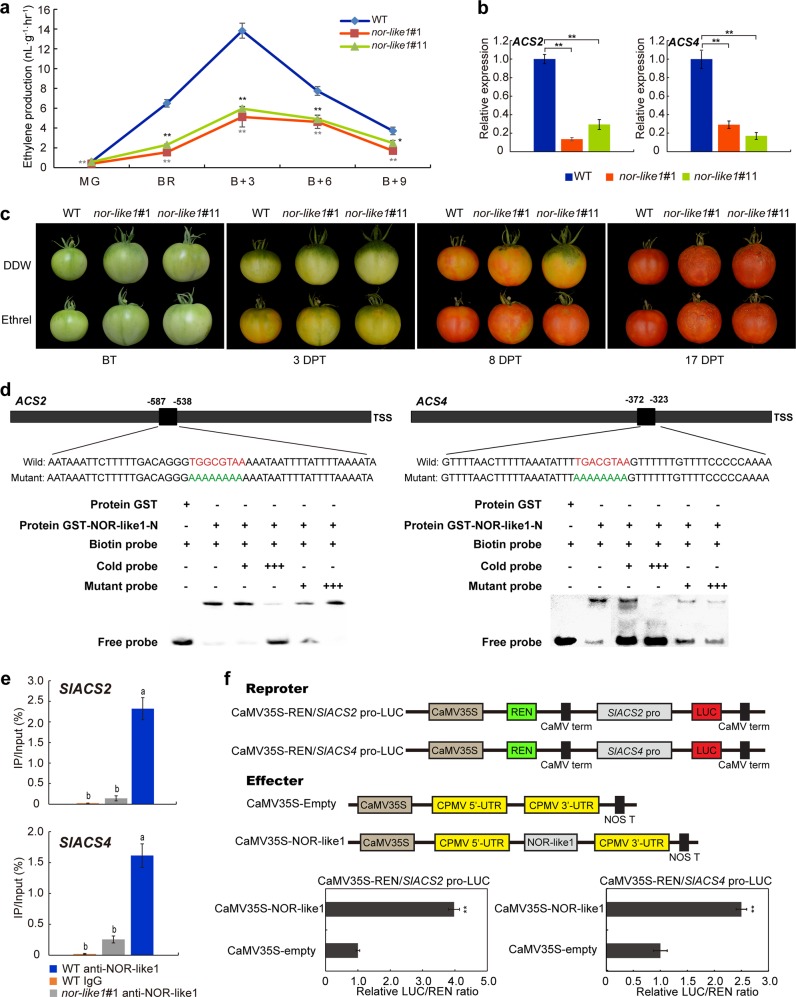Fig. 5. SlACS2 and SlACS4 are directly regulated by NOR-like1 resulting in the reduction of ethylene production in CRISPR/Cas9 nor-like1 mutant fruits.
a Ethylene production was reduced in nor-like1#1 and nor-like1#11 mutants compared with that in WT. Asterisks indicate significant difference determined by Student’s t-test (*p < 0.05; **p < 0.01), asterisks marked in dark gray indicated significant difference of nor-like1#1 and WT, the significant difference of nor-like1#11 and WT were marked in black. b Expression of SlACS2 and SlACS4 was significantly downregulated both in nor-like1#1 and nor-like1#11 mutants compared with that in WT. Asterisks indicate p < 0.01 (Student’s t-test). c The phenotype of WT and nor-like1#1 and nor-like1#11 mutant fruits after treatment with ethrel. DDW, double distilled water, BT before treatment, DPT, days post treatment. d Binding of NOR-like1 to the promoters of downstream target genes SlACS2 and SlACS4. The sequences of the wild-type probes containing the NACRS were biotin-labeled. Competition for NOR-like1 binding was performed with 50× and 500 × cold probes containing the wild-type NACRS (indicated with red letters) or mutated NACRS (indicated with green letters). The symbols + or – represent presence or absence, respectively, +++ indicates increasing amounts. e ChIP-qPCR assay showing the direct binding of NOR-like1 to the promoters of SlACS2 and SlACS4. Values represent the percentage of DNA fragments in WT fruits that co-immunoprecipitated with anti-NOR-like1 or IgG, or DNA fragments in nor-like1#1 fruit that co-immunoprecipitated with anti-NOR-like1 relative to the input DNA. Bars represent ± SD of three independent replicates. The lowercase indicates significant difference (Duncan’s multiple range test, p < 0.05). f Transient expression assay for NOR-like1 activation of the SlACS2 and SlACS4 promoters. Each value represents the means of three biological replicates. Asterisks indicate p < 0.01 (Student’s t-test)

